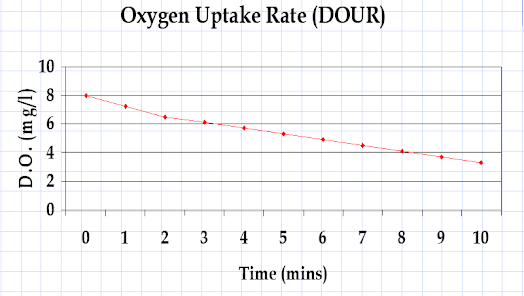The Four Pillers of Activated Sludge
The goal of this article is:
- To Introduce the reader to the basic framework of activated sludge troubleshooting and process control.
- To provide basic guidance in using this basic framework in optimizing and troubleshooting the activated sludge
Learn Theory! Learn Theory! Learn Theory! If you know theory
you can use it! If you don’t know theory you can’t use it!
____________________________________________________________________________________
The Georgia Rural Water Association is
always available to assist any municipality that serve a population of
<10,000 with process control, troubleshooting, training, lift station
maintenance, smoke testing, leak detection, standard operating procedure
development, asset management development, or any other compliance and
operational issues that may crop up. To request their assistance, please contact
them at Contact Us - Georgia Rural Water Association
(grwa.org).
The
next few posts will focus on Activated Sludge Concepts. After that, I
will focus on some water related topics of interest.
***********************************************************************************
My career from April 2002 till
June 2023 involved many hours per week of windshield time and many lonely
nights in hotels. Interspersed in this time were numerous calls for assistance
in troubleshooting issues with activated sludge facilities. Early on, to get a
handle on the issues at the facility, I would either go to the plant to review
the data, or have the staff email me the data if it was in a suitable format. Being a ‘road warrior’ offered me plenty of
time for contemplation and meditation. The following Four Piller Framework came
to me one day during one of those contemplation sessions between plant visits.
I was mulling over how I could more effectively troubleshoot plant compliance
issues without having to visit the plant or request information to be emailed
to me when I realized wastewater could be boiled down to four basic themes: Food,
Population, Time and Environment.
Think of the Activated Sludge Process as a Table, and the four themes as the four legs.
|
|
|
FOOD can be subdivided
into: Quality (proteins, carbohydrates, fats, ammonia, phosphorous, nutrients);
Quantity (Too much, too little, just right?); Form (soluble, insoluble, etc)
and Inert (sand, silt, grit, wood chips, sawdust, etc).
POPULATION can be
subdivided into: Quality (floc size and shape, clarity of water between floc,
settleabilty [SVC, SVI], filamentous organisms present, etc); Quantity (MLSS, MLVSS,
settleabilty [SVC, SVI], relative population of Indicator Organisms, relative
population of filamentous organisms); also of importance is knowing the relative growth rates of various organisms (growth rates can vary from a few minutes to +40 days)
TIME can be subdivided
into: Hydraulic Detention Time (capacity issues [Flows too high/low affecting
treatment, settled solids taking up volume in reactors], Recycle/Recirculation [Flows
too high/low affecting retention time or settling]); Solids Retention time (F/M
Ratio, MCRT, SRT)
ENVIRONMENT can be
subdivided into: Dissolved Oxygen levels, Adequate Mixing, Alkalinity, pH, Temperature,
Oxidation/Reduction Principle (ORP), Toxicity, Surfactants, presence of
nitrates or oxygen in “anaerobic” zones (Q - When is an anaerobic zone really
an anoxic zone? A - When nitrates are present), presence of oxygen in an anoxic
zone.
The beauty of reducing activated
sludge down to four basic principles is the ability to ask pointed questions and
quickly drill down towards a solution. These principles enabled me to take a
phone call and troubleshoot a WWTP compliance issue within a relatively short
time just by asking a few specific questions. The ability to troubleshoot WWTP issues
on the phone was critical when traveling 40+ weeks out of the year.
But don't let the simplicity of the above overview fool you. Many of these subdivisions can be placed in two or more categories. For example, organism growth rates can be placed under the heading of population and time. F/M ratio can be placed under food, population and time. This just adds to the complexity, which is all the more reason for trying to simplify process control in the first place.
Someone might ask, ‘What about
mechanical issues? Won’t they have an impact on treatment? You don’t even
address these!’.
To the above question my answer
would be this. I cannot tell you how often ‘operation’ issues can be traced to
mechanical issues. If one is experiencing a dissolved oxygen (DO) issue, one should
inspect the mechanical equipment (Blowers: inspect the intake/outlet to see if
there are obstructions, the vanes to make sure they clearances are correct, the
piping to make sure there are no leaks, the motor, couplings and belts to make
sure there are no issues there. Brush Aerators: inspect the motor, couplings
and belts, inspect the water submergence. Impellor devises: Inspect the
impellors for wear, the shear pins, belts couplings, etc). Check the recycle/recirculation
pumps to make sure they are pumping the rated capacity. Etc.
Having the ability to rapidly
troubleshoot issues at your plant will enable you to focus more on the other
times that take up your time: personal, maintenance, regulatory issues, etc.
The next post will begin to introduce the subcomponents of the framework introduced above and provide more information on how to use them in process control and troubleshooting.
Feel free to contact me should
you serve a population >10,000 or have any questions or issues that the GRWA
is unable to assist you with. Also, if you would like to contribute an article
feel free to email me at the address below. I am always looking for
contributors that have an interesting perspective, topic or has an interesting
case that they would like to share – especially if the solution is a direct
result of applying the principles from this forum.
Dennis Brown,
Wastewater Specialist and Trainer, Retired
678.750.3996


Comments
Post a Comment